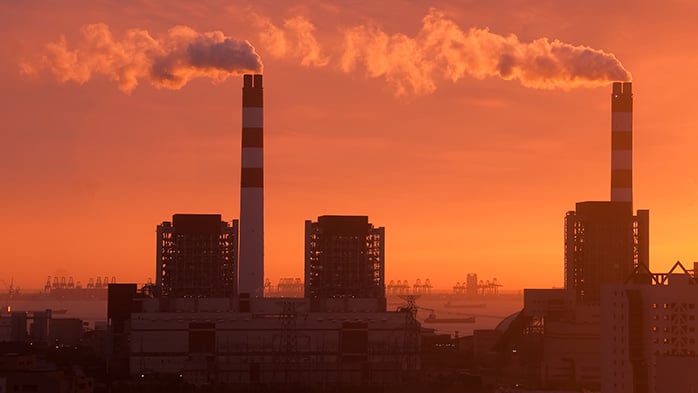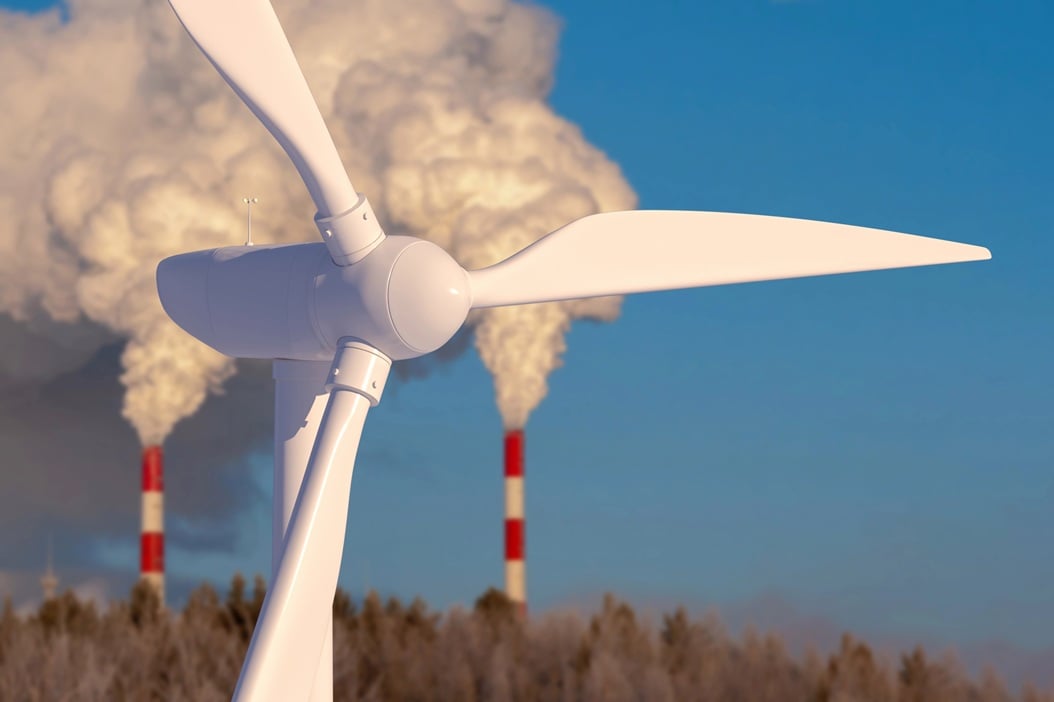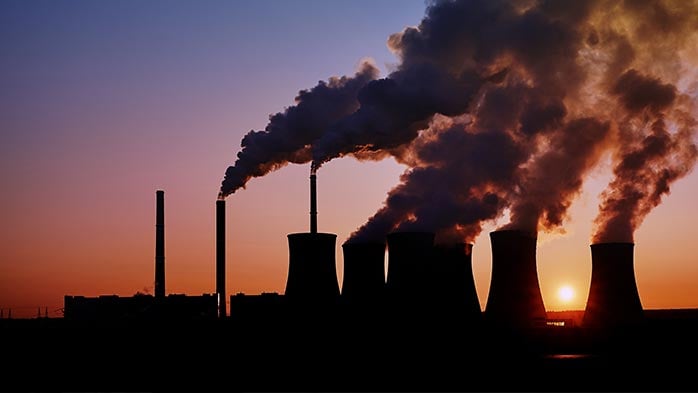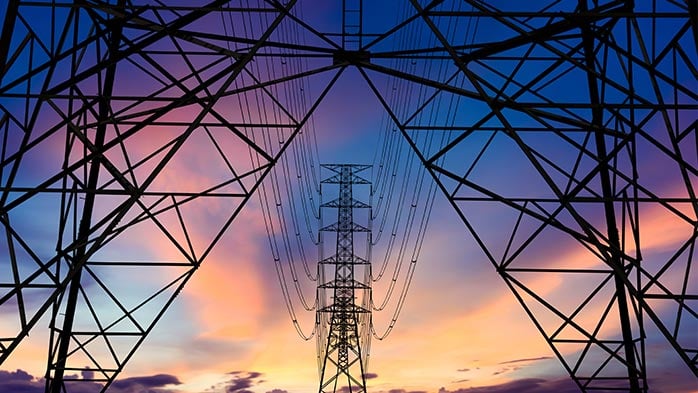Ammonia is touted as the low-emissions fuel of the future and there are multiple proposed projects – and more announced almost by the day – that appear to lend credence to this view. But there are significant challenges linked to the costs, the energy conversion rate and environmental credentials of green ammonia. In this Insight we explore these challenges.
Our analysis shows that the current cost of green ammonia from an integrated ‘renewables-hydrogen-ammonia’ facility is more than $900 /t, even where solar and wind resources are plentiful and considered ‘low cost’. Even under a scenario of very optimistic project characteristics, it is difficult to see the ex-works cost of green ammonia falling much below $600 /t – equivalent to ~$45 /GJ at the point of use – without access to very low-priced electricity. This reflects the underlying cost of renewable energy as well as the energy conversion rate of green ammonia production, which is poor. Such high costs suggest ammonia is unlikely to form a core element of global energy supply but might find application in niche areas – as a transition fuel in existing equipment to give time to build out renewables or where renewables are not feasible, such as in shipping.
Finally, combustion of ammonia is likely to lead to elevated levels of nitric oxides emissions, which are environmental pollutants, and nitrous oxide, which is a greenhouse gas. As such, ammonia cannot be regarded as a ‘greenhouse gas-free’ or environmentally benign energy source, without appropriate abatement practices in-place.
The cost challenges of producing green ammonia
To explore the cost challenges of producing green ammonia, this Insight uses configuration information for a proposed project, the Asia Renewable Hub, to develop a case study. This project is touted as having “outstanding wind and solar resource and large project scale [that] will result in competitively priced renewable energy”, but was rejected by the Australian Federal government in June 2021 on environmental grounds. However, given its supposed low-cost credentials, we feel it is a good case study to understand the cost potential of green ammonia.
The proposed Asia Renewable Hub project is in the East Pilbara in Western Australia and is predicated on the production of low-cost, renewable power based on complementary “world class” solar and wind resources in the region and economies of scale. Some of the power generated is expected to be provided to local mine sites, but the majority is planned to be converted into ammonia for export, primarily for use as a fuel.
While the above gives “up to 100 TWh” of annual power output from the 26 GW of capacity, project literature suggests annual power output of 83 TWh, of which solar accounts for ~26%. Our calculations suggest that 83 TWh/y with 26% solar is just about feasible, but only if solar and wind load factors at the top end of the ranges expected are achieved. Here, we have assumed 83 TWh/y as our base case, although we regard this as optimistic. This is an important assumption, as it provides the base line for sizing the rest of the facility. For example, if 3 GW of power capacity are used locally, this implies ~73 TWh/y for ammonia production, which equates to ~6.5 MtNH3/y under our base case assumptions.
Based on this, the following table sets out our view of the major equipment required along with our estimates of capex. requirements, which includes consideration of cost reductions on current capex. levels to account for scale economies. In addition, operating costs have been estimated bottom up on a facility-by-facility basis.
The table below gives an estimated capex. of ~$51 bn for the entire project, which is aligned with the $35 bn quoted by the project developers for the 15 GW Phase I development, assuming some aspects of project development are front-loaded.
The levelised cost of green ammonia is high
Based on the above assumptions on capex. and opex., we estimate the levelised cost of ammonia from the facility at ~$945 /tNH3.
To compare, the average monthly price for ammonia in Asia (i.e. CFR, JKT) – the expected export market for this facility – in the three year period prior to the current energy crisis was ~$300 /tNH3. The current energy crisis has seen the monthly price lift to ~$700 /tNH3 towards end-2021, but this level is not expected to persist. On this comparison, the cost of ammonia from such a facility looks very, very high.
But how sensitive are our estimates to different assumptions?
The following table examines the impact of each of the key assumptions individually and in total and also gives a CRU view of the theoretical minimum costs based on the application of a credible set of sensitivities.
The above table shows the factors that can have the largest impact on costs – and critical to influencing project economics – which include financing costs, electrolyser efficiency, overall capex. and taxation incentives.
Further, we have provided a CRU view of the ‘theoretical minimum (or optimum) cost of ammonia’ applying only those sensitivities that we think are valid. The sensitivities included are:
- 10% reduction of capex. over and above reductions already applied in the base case giving an ~20% reduction is expected capex. from current levels.
- 10% reduction in opex.
- A discount rate of 7% based on a perceived lower risk if the project is supported by the government as part of a low emissions drive and/or if government-backed loans are available.
- A reduced tax rate to reflect tax incentives given by a government wanting to encourage investment (n.b. corporate tax rate reduced to 20% and a 5 y tax holiday).
Electrolyser efficiency lifted to 80%.
The resulting ‘optimum cost’ of ammonia of ~$610 /t from a project that has very favourable characteristics starts to approach – although remains well above – the current cost structure of the ammonia industry. As such, it seems conceivable that ‘green ammonia’ could provide a viable alternative for current ammonia buyers that are prepared to pay a hefty premium. But what does this cost estimate imply for ammonia used as a fuel?
Ammonia is an expensive fuel
One of the first things to highlight when considering ammonia as a fuel source is the energy conversion rate in ammonia production. The reduction in available, useful energy along the green ammonia production chain is given in the Sankey diagram below, which shows the energy conversion rate reaches a low of 17% when ammonia is used for power generation. That is, 83% of the input renewable energy is ‘lost’ in the production and use of green ammonia for power generation. If ammonia is used as a hydrogen storage medium, the energy conversion rate at the point of use of hydrogen would be 28%, after complete cracking of the ammonia to release hydrogen.
The main ‘losses’ are associated with electrolyser efficiency, enthalpy of formation of NH3, energy needed for ammonia vaporisation and cracking before use and energy used in and losses from the Haber Bosch (HB) loop. In our view, this loss of useful energy, particularly when used for power generation, cannot be the basis of a sustainable energy system.
A second consideration is the overall cost of energy when provided by ammonia. Above, we give a theoretical minimum cost of ammonia from a project with very favourable characteristics of ~$610 /tNH3. This is equivalent to ~$45 /GJ based on the useful energy content of ammonia at the point of use (i.e. after taking into account the necessary heating, vaporisation and cracking of ammonia before use) and after factoring in logistics costs. In those applications where ammonia is considered as an alternative, low-carbon fuel, such as maritime fuel or for co-firing in power stations, the prices of fossil-based alternatives – under normal market conditions rather than the current tighter market – are given below.
Thus, even where power generation is subject to carbon taxes, such as in Europe, the carbon price needed to equalise the cost of ammonia with fossil fuels is well above current levels (n.b. analysis does not take account of incremental capex. needed to allow the use of ammonia, which would imply higher CO2 prices). Thus, where power generation is not subject to a carbon price and without some other form of mandate, there would be little incentive to switch to ammonia as a fuel. And, in either case, green ammonia would be a very expensive fuel, in the above example generating electricity at a fuel only cost of ~$360 /MWh, 6 times typical wholesale prices. Also, we estimate the use of green ammonia in shipping at these costs would add ~$29 /t to the cost of moving iron ore from Brazil to Asia and ~$10 /t to the cost of coal from Australia to Asia. Combined, these increases would add ~$50 /t to the underlying cost of steel production, equivalent to the through-cycle profit level of the global steel industry.
The above discussion is predicated on ammonia being a zero-greenhouse gas fuel, however, this is not the case, as explored in the following section.
Ammonia is not a ‘low emissions’ fuel without abatement
Whilst ammonia contains no carbon and so will not emit CO2 when burnt, it contains a high proportion of nitrogen that, when combusted, generates nitrogen oxides (i.e. NOx and N2O). N2O has a far greater greenhouse warming potential than CO2 (i.e. up to 298x greater). Thus, without environmental controls in place, the greenhouse gas warming potential of ammonia could be material (n.b. there is very little available information in this area to confirm what the emission level may be).
In addition, NOx emissions from ammonia combustion are expected to be high, which will be problematic given it contributes to ground level ozone formation, respiratory issues and acid rain. Environmental controls such as selective catalytic reduction (SCR) can be applied to reduce NOx levels specifically, and indeed are already fitted on many vessels, but the NOx issue and costs of abatement are likely to become more prominent if ammonia is used as a fuel.
Overall, while environmental controls may be able to mitigate some of the environmental impacts of NOx and N2O generation, the labelling of green ammonia as inherently ‘environmentally friendly’ is disingenuous. Producers and consumers will need to ensure strict adherence to emission controls throughout the value chain to minimise environmental impacts.
Implications for demand
The cost of green ammonia from an integrated ‘renewables-hydrogen-ammonia’ facility is high but could potentially be reduced with a focus on key parameters that drive costs, including financing costs, electrolyser efficiency, overall capex. and taxation incentives.
The high costs suggest ammonia is unlikely to form a core element of global energy supply but might still find application in niche areas – as a transition fuel in existing equipment to give time to build out a renewables base, which would be temporary, or where the direct application of renewables is not feasible, such as in shipping. However, even in these cases, green ammonia needs to be assessed against other options, such as the direct use of hydrogen, for which energy conversion losses would be lower, or other fuels derived from hydrogen (e.g. low emissions methanol).
While green ammonia will remain a high-cost alternative to fossil fuels as an energy source, and cannot yet be regarded as ‘low emissions’, it seems feasible that costs might fall such that it can provide a viable, green alternative to current ammonia buyers. In this case, the environmental credentials of green ammonia ‘in use’ would be no different from traditional, or grey, ammonia.
CRU’s Low Emissions Ammonia Outlook is a one-stop shop for understanding the current state of play of the green ammonia sector and is available today. If you have any questions or want to discuss our research into green ammonia, the energy transition or sustainability more generally, please get in touch. We will be happy to talk.
Sign up to our Low Emissions Webinar on 22 February where Paul and CRU’s Fertiliser team will be discussing the status of green ammonia projects and the challenges facing green ammonia as a fuel. We look forward to seeing you there.

















